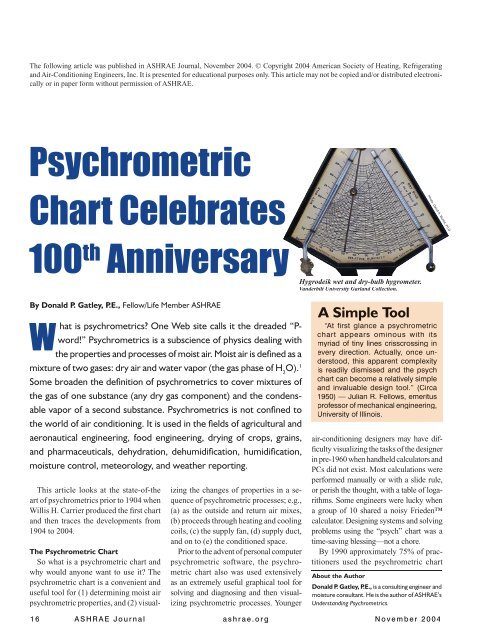
An important HVAC function is to add or remove water vapor from building air. In the laboratory, water vapor behaves predictably when changes are made to its temperature, pressureįig. This vapor is actually a low pressure, low temperature steam. Water vapor in the atmosphere comes from river, lake and ocean evaporation and plant transpiration. HVAC systems can add and remove heat from the dry air component of a building’s air, but they do not affect the proportion of gases making up the dry air. Pure dry air is made up of several gases: about 77% nitrogen, 22% oxygen, 0.04% carbon dioxide and 0.96% other gases, such as argon, neon, helium and krypton. Impurities, such as smoke, dust, pollen, bacteria and noxious gases. Because all of these relationships are related 34ģ. To assist engineers and designers, these relationships and values have been graphically combined in what is known as the psychrometric chart. They also precisely determined the values of these parameters throughout the normal range of HVAC operations. They found that temperature, relative humidity, enthalpy, moisture content and dew point temperature are related to each other. For more than a century, scientists and engineers have measured and examined these relationships. Psychrometry is the study of air, temperature and water vapor relationships. The air that you breathe and HVAC systems manage is a mixture of: 1. Chemical reactions such as the formation of smog, ozone or acid rain are not a part of this discussion. The atmosphere is a mechanical mixture of many components. Regardless of the semantics, every HVAC process, and virtually every item of HVAC equipment and control, has a purpose which can be analyzed and determined with psychrometrics. However, throughout much of the HVAC industry, both concepts are combined under the general term of psychrometrics.

Strictly speaking, psychrometry and the psychrometric chart are separate and distinct concepts. Mathematically, the engineer only needs to know two of them for a given environmental condition, the rest can be read from the chart. The psychrometric chart will in fact enable you to be an indoor meteorologist! After completing Chapters 5 and 6 however, you will understand all the components of the psychrometric chart, and you will be able to use it to predict the temperature and moisture content of the indoor weather. At first glance the chart may seem a bit complex.

Look over the psychrometric chart in Figure 5-1. By controlling a building’s HVAC equipment, they are determining the weather for everyone inside the building. What temperature would you choose? What would be the humidity? The ideal wind speed? Questions like these are answered every day by HVAC system designers because their systems control the indoor weather-the temperature, humidity and air velocity inside a building. Imagine that you were chosen to decide what today’s weather should be. Use a psychrometric chart to determine the effect of sensible and latent heat changes on initial air conditions. Read a psychrometric chart and locate different conditions on it. Explain Boyle’s, Charles’ and Dalton’s Laws. Define psychrometry, the psychrometric chart and psychrometrics. After studying this chapter you will be able to: 1.

By understanding these concepts you will understand the application of many of the physical principles used throughout the industry of heating, ventilating and air conditioning. O condition air or water with a variety of equipment you have to understand psychrometry and the psychrometric chart. CHAPTER 5 Psychrometrics: The Properties of Air


 0 kommentar(er)
0 kommentar(er)
